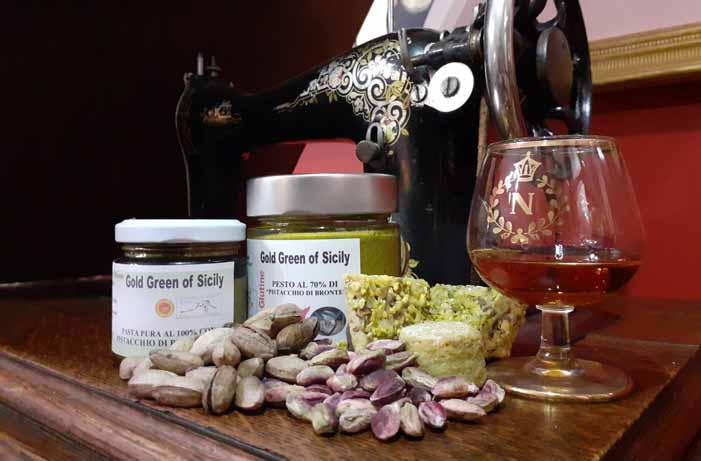Dopo la raccolta il frutto viene smallato, tramite sfregamento meccanico, con apparecchiature artigianali, e quindi lasciato asciugare al sole per 5-6 giorni. Dalla smallatura del frutto si ottiene il pistacchio in guscio, localmente chiamato Tignosella, che successivamente viene sgusciata e pelata dai commercianti per essere immessa sul mercato. La pelatura, cioe’ la rimozione dell’endocarpo, avviene oggi attraverso un procedimento altamente tecnologico mediante breve esposizione del frutto a vapore acqueo ad alta pressione causando il distacco dell’endocarpo.
Col successivo passaggio alla macchina pelatrice e mediante lo sfregamento dei rulli a velocita’ differenziata viene tolta la pellicola non piu’ aderente. Per nastro convogliatore automatico i verdi pistacchi passano adesso un complesso circuito di essicazione a bassa velocita’ e da questo nella macchina selezionatrice elettronica che scarta gli eventuali acini di colore improprio.
Col confezionamento del prodotto ormai asciutto (umidita’ 5-6%) in cartoni da 12,5 Kg. si conclude il ciclo di lavorazione. In ambiente fresco e secco il prodotto conserva il suo colore per diversi mesi, che invece dopo la prolungata sosta tende a sbiadire. Pertanto le industrie trasformatrici pelano soltanto su ordinazione e non
tengono scorte di “pelato”, mentre il pistacchio semplicemente sgusciato e non pelato puo’ essere conservato in frigorifero per ben oltre un anno.
THE PROCESSING After harvesting, the fruit is hulled, by mechanical rubbing, with artisanal equipment, and then left to dry in the sun for 5-6 days. From the hulling of the fruit, the pistachio in shell is obtained, locally called Tignosella, which is subsequently shelled and peeled by traders to be placed on the market. Peeling, that is, the removal of the endocarp, takes place today through a highly technological process by short exposure of the fruit to high pressure water vapor, causing the detachment of the endocarp. With the subsequent passage to the peeling machine and by rubbing the rollers at different speeds, the film that is no longer adherent is removed. By means of an automatic conveyor belt, the green pistachios now pass a complex drying circuit at low speed and from this into the electronic sorting machine which discards any berries of improper color. The processing cycle ends with the packaging of the now dry product (humidity 5-6%) in 12.5 kg cartons. In a cool and dry environment, the product retains its color for several months, which instead tends to fade after prolonged pause. Therefore the processing industries peel only on order and not they keep stocks of "peeled", while the pistachio simply peeled and unpeeled can be stored in the refrigerator for well over a year.
